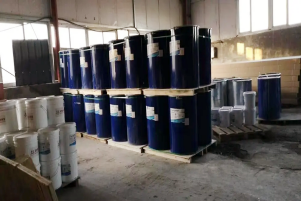When the ambient temperature of silicone sealant is low in winter, the viscosity increases, and the sealant is not applied smoothly.

Insulating glass using silicone sealant is composed of chemical raw materials such as silicone rubber, silicone oil, and calcium carbonate. Taking winter in the northern hemisphere as an example, when the temperature drops in the winter in the northern hemisphere, silicone rubber, and silicone oil become thicker, less fluid, and more viscous. This thickening and sticky situation is normal and does not affect product quality.
Silicone one-component sealant is moisture-cured. The sealant absorbs moisture in the air after application and penetrates and solidifies from the outside inward. The curing time of the sealant is related to the ambient temperature and humidity, and the thickness of the glue. The lower the temperature and humidity, the slower the curing.
To better demonstrate the product effect, it is recommended to choose a clean environment with a relative temperature of 5℃~40℃ and a relative humidity of 40%~80%. Taking the northern hemisphere as an example, when the winter temperature is below 5°C, LIJIANG Glass recommends no more construction sealants.
In the case of low temperature and low humidity in winter, the curing speed of the sealant is slower than normal. When the sealant encounters changes in joint displacement before curing, the surface of the sealant is prone to bulges or cracks.
Solution:
1. It is recommended to construct in a cloudy environment in winter, because the temperature difference between day and night is small on cloudy days, the deformation of the glue joint is small, and bulging is not easy to occur;
2. Use appropriate shading measures to prevent the glass panel from being directly exposed to sunlight, reduce the surface temperature of the glass panel, and reduce joint changes caused by temperature differences;
3. Adopt the secondary sealing method, first apply sealant to 1/2 of the depth of the seam, wait until the surface is dry, and then apply secondary sealing to fill the seam.


